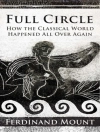1922 was a year of great turbulence and upheaval. Its events reverberated throughout the rest of the twentieth century and still affect us today, 100 years later.
Empires fell. The Ottoman Empire collapsed after more than six centuries. The British Empire had reached its greatest extent but its heyday was over. The Irish Free State was declared and demands for independence in India grew. New nations and new politics came into existence. The Soviet Union was officially created and Mussolini's Italy became the first Fascist state.
In the USA, Prohibition was at its height. The Hollywood film industry, although rocked by a series of scandals, continued to grow. A new mass medium – radio – was making its presence felt and, in Britain, the BBC was founded. In literature it was the year of peak modernism. Both T. S. Eliot's The Waste Land and James Joyce's Ulysses were first published in full.
In society, already changed by the trauma of war and pandemic, the morals of the past seemed increasingly outmoded; new ways of behaving were making their appearance. The Roaring Twenties had begun to roar and the Jazz Age had arrived.
In a sequence of vividly written sketches, Nick Rennison conjures up all the drama and diversity of an extraordinary year.
关于作者
NICK RENNISON is a writer, editor and bookseller with a particular interest in modern history and in crime fiction. He is the author of 1922: Scenes from a Turbulent Year, A Short History of Polar Exploration, Peter Mark Roget: A Biography, Freud and Psychoanalysis, Robin Hood: Myth, History & Culture and Bohemian London, published by Oldcastle Books, and the editor of six anthologies of short stories for No Exit Press. He is also the author of The Bloomsbury Good Reading Guide to Crime Fiction, 100 Must-Read Crime Novels and Sherlock Holmes: An Unauthorised Biography. His crime novels, Carver's Quest and Carver's Truth, both set in nineteenth-century London, are published by Corvus. He is a regular reviewer for both The Sunday Times and Daily Mail.












